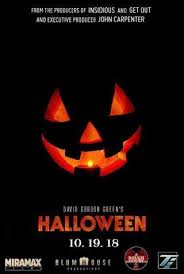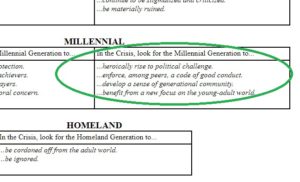A Tale Of Two Generations
Back in the early to mid-2000s, I lived in an apartment in Raleigh, North Carolina. At the end of the block was a commercial plaza which had a barber shop, which is where I would go to get my hair cut. I must have gotten my haircuts there for five years. It was an old-fashioned men’s barbershop, a proprietorship owned and operated by two men. The chairs had ashtrays built into the armrests, though no one ever used them. There was a small TV up against the ceiling in one corner. Customers would hang around just for conversation. It was the kind of business that acts as a “third place,” or place of gathering and shared experience outside of the home or workplace.
From talking to one of the two men who ran the shop, I learned that it had opened in the 1950s. One of them had started the business, and then invited the other to be his partner. This guy told me he had been coming to work at this place ever since. It was the only place he had ever worked – and for longer than I had been alive. In contrast, since graduating from Virginia Tech in 1988, I had worked at ten different jobs in four different states.
Judging from their life story and apparent age, the two barbers must have been members of the Silent generation, born 1925-1942. Their career stability is characteristic of their generation, as my career instability is characteristic of mine – Generation X, born 1961-1981. When you read laments about the lack of job security in this day and age, you are reading about this trend.
This instability hasn’t necessarily been a bad thing. I can’t imagine what it would be like to go to the same place for work for decades on end. Honestly I think it would drive me crazy. I have enjoyed my nomadic contractor life, despite the insecurities, as I described in an earlier post. I have been exposed to so many different environments, and met so many different people. It’s been an adventure. But what I have missed, which the two Silent generation barbers enjoyed, is a deep sense of belonging to a community of people rooted in one place.
Shortly before I moved out of that apartment, I heard from the old guy while he was cutting my hair that his partner had gotten sick, and was planning to retire. He was going to retire as well, since he didn’t want to run the business alone. Not long afterward, the store was empty. The chairs, the counters, the TV on the shelf – everything was gone.
Then a tattoo shop opened up at the same location. It only lasted a few months before it closed – some younger entrepreneur’s failed dream. Next came a gift shop. Then I moved away, so I have no idea if the gift shop lasted, or if any business with staying power could ever survive there again. Or where all the men who used to hang out at the barbershop now went to instead – if they ever found a new third place.




 Let’s look at the remaining items on the list of predictions about the Millennial generation – that Millennials will heroically rise to political challenge, that they will develop a sense of generational community, and that they will benefit from a new focus on the young-adult world. For evidence, I will simply consider the kinds of news stories that have been prevalent on social media and the web in the past decade. So let’s start with the last item on the list.
Let’s look at the remaining items on the list of predictions about the Millennial generation – that Millennials will heroically rise to political challenge, that they will develop a sense of generational community, and that they will benefit from a new focus on the young-adult world. For evidence, I will simply consider the kinds of news stories that have been prevalent on social media and the web in the past decade. So let’s start with the last item on the list. When we arrived in the city the station was so crowded that it took an hour to get to the street. A huge mass of sign-carrying people slowly made its way through the turnstiles to exit the metro, and finally we were in the open air. We found our way to the mall and suddenly were swept up into a throng of protesters, streaming from where the speeches had been made (speeches we had missed, since it took so long for us to reach the city) towards the White House. The chanting, roaring energy was indomitable. It was the backlash against the backlash.
When we arrived in the city the station was so crowded that it took an hour to get to the street. A huge mass of sign-carrying people slowly made its way through the turnstiles to exit the metro, and finally we were in the open air. We found our way to the mall and suddenly were swept up into a throng of protesters, streaming from where the speeches had been made (speeches we had missed, since it took so long for us to reach the city) towards the White House. The chanting, roaring energy was indomitable. It was the backlash against the backlash.
